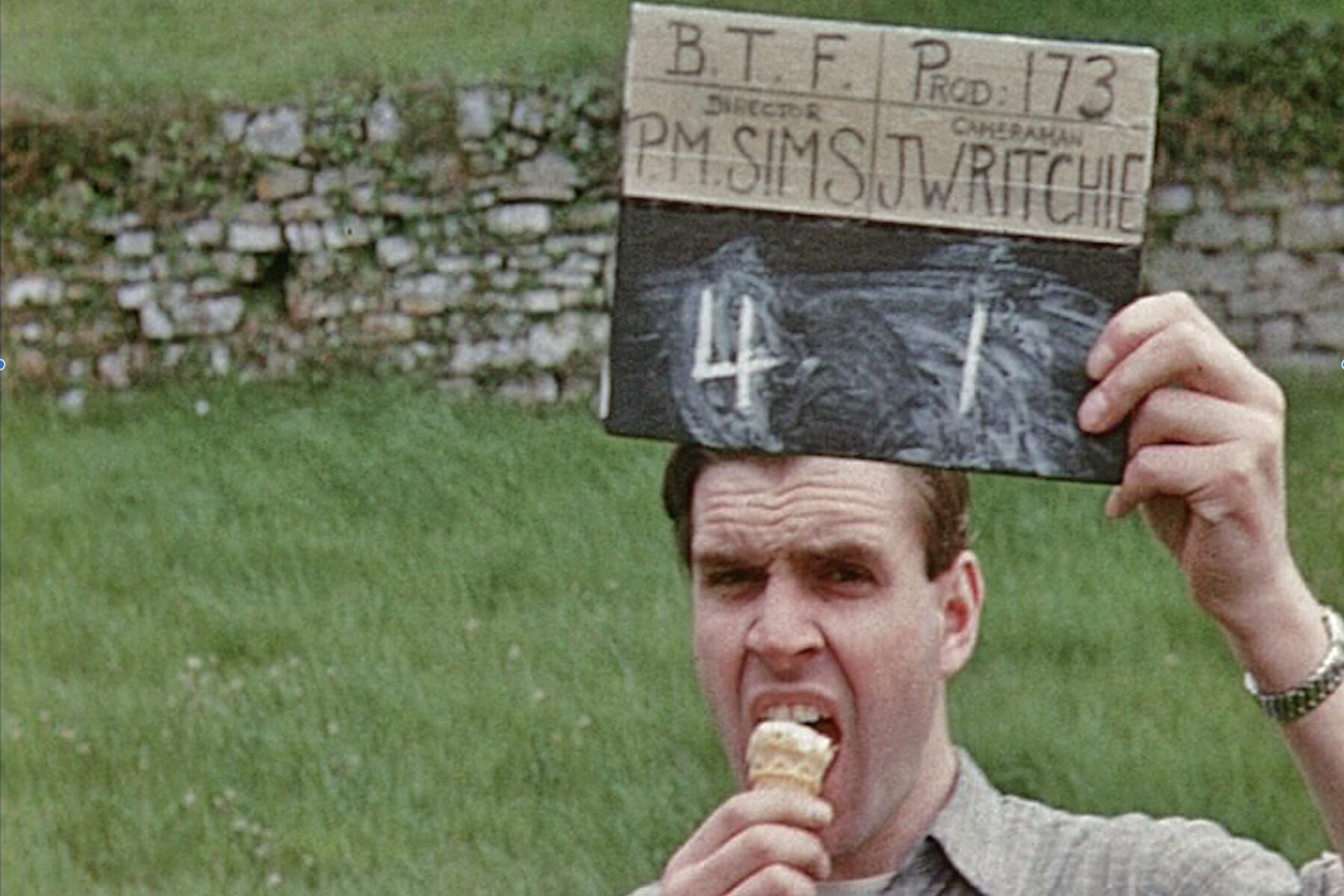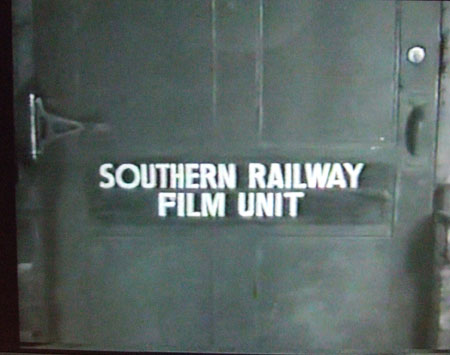
“…my uncle Laurie found that there was a small unit of four people making documentary and training films in the nether regions of Waterloo Station, well beneath the notice of a trade union. My father set up his Blickensderfer (the oldest typewriter in the world) on our dining-room table and dashed off a letter to the company chairman. “I can get you in there” he said, “you might as well learn something while you are waiting”. I think it was the first time I saw him put himself out for me, and was really touched by it.
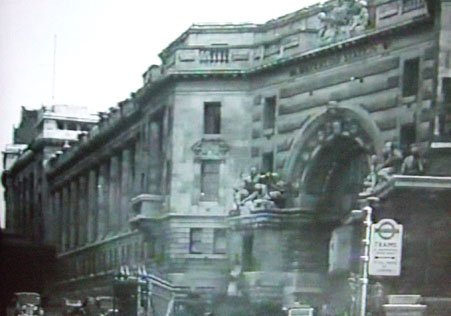
So began a very happy first year; there was Basil, a busy but sensible boss, a gay script-writer, and best of all, old Tom Heritage. He was well named. The only real railwayman among us, he had started on the Brighton line as a boy in the uniform grade, i.e. the lower orders. He finally landed up as our projectionist and used to travel all over the system showing training films to staff in a railway carriage that had been converted into a cinema. This was known as the cinema coach and in it Tom took a jealous proprietorial interest.” (Clara)
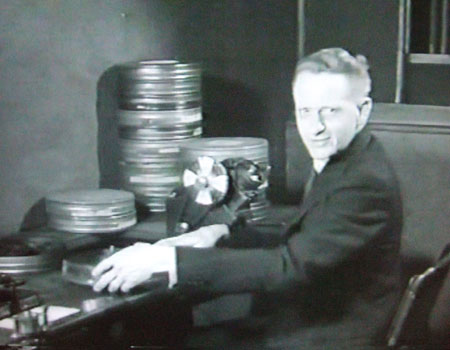
Photography was a hobby with him (Tom Heritage). “He had a Thornton Pickard and plates and things like that. I had a looted Rolleiflex from my Army days and I got myself an enlarger, built myself a darkroom in my parents’ house in Margate where I used to go for weekends…. I would decide what I wanted and I would take one negative and that would be that – for two years I did this and I’ve never done it since. But it was great advantage later on when most people had come up as clapper boys and assistant directors, and instead I learn the photographic side, what happens when the film is put in the developer and how you can solarise it, and you can do this and that.” Interview with John Legard.
“Our little unit came under the wing of the Public Relations and Advertising department upstairs in the station offices, whence everybody would crowd into the small theatre below the arches whenever there was a run through of one of Bobby’s commentaries. These were one-off affairs because afterwards drastic changes had to be made before final recording could take place. For example in a travel film about the river Thames, over a shot of two youths in swimming trunks lying on the river bank, “Runnymede, birthplace of English liberty, where the English still take liberties with each other – especially at week-ends”. The other example that springs to mind was in a catering film called SERVICES RENDERED where a young commi-chef putting some basins into an oven is asked “What’s in your pudding little boy?” (that actually survived in the finished film).” (Clara, the second line was hardly any better, “I’ll have some later perhaps.”

Interview with John Legard,” I realised fairly quickly that in actual fact the best department to belong to was the camera department because they seemed to have more opportunities for fun rather than being stuck in the cutting room or being an assistant director which meant just paying for everybody else’s tea and keeping accounts which I am very bad at. So I opted for the camera department very early.”
In one restaurant scene from Services Rendered, a rather raffish David Watkin sits as an extra, seemingly exhanging wicked gossip with his companions during the Silver Service.
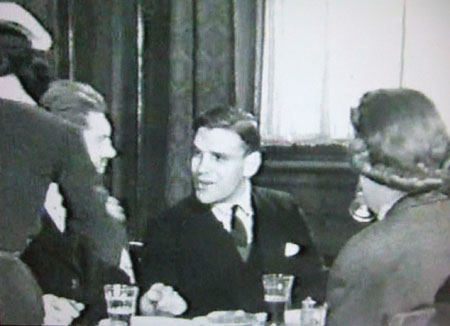
“I began my career with chronological exactness on the first of January 1948 (in those days a holiday only in Scotland) and three months later, on April 13th, shot my first piece of film. All the others were out on a job and I was left guarding the unit’s sanctum. Close by was a hydraulic lift by which rolling-stock from the Waterloo and City underground was raised to the level of the main line for repairs. While some wagons were being shunted onto this device, the hydraulics gave out and dragged them plus the engine (M7 class no 672) into the abyss. The driver and fireman jumped off just in time, while I, disturbed by the most almighty crash and thunderings, grabbed a Newman Sinclair and shot some stuff of no 672 looking like an upside-down Hornby toy at the bottom of the lift-shaft.
When the others came back everyone was pleased and excited until word came down from above that my negative must be destroyed unprocessed – an early lesson for me that truth is seldom welcome in official circles.” (Clara)
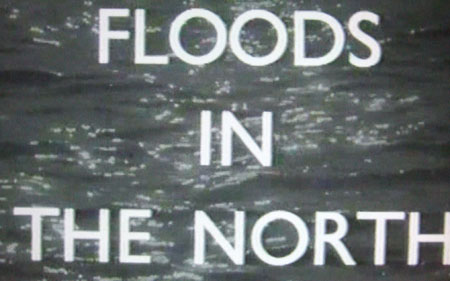
“However it was not long before my second solo exercise happened. There had been severe flooding on the Edinburgh route with sections of the main line washed away, and a film had been quickly put together. All that was needed to complete it was a background for the titles, so I was despatched to the RAF Memorial on the Embankment to shoot some floating debris on the Thames (easy enough to come by even in those days). Apart from nearly getting arrested by a nosey policeman all went well and this time I not only made it to the developer but was actually used behind the imaginative title FLOODS IN THE NORTH.
The first picture with my new trainee’s ticket was on a grand scale with a sound camera, a real actress (Barbara Lott), and the eminent director J.B.Holmes. It was virtually a small feature film, fully scripted, about life in Southampton woven around the docks and shipping. Jack Holmes was a charming gentleman, with a slight, rather attractive stammer that disappeared completely when he read the commentaries for other people’s films – or as in this one, played a small part as a night-school teacher.
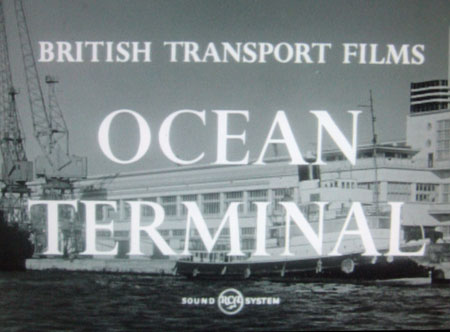
That scene was my first time putting the board in with synch sound, and a right balls-up I made of it. As, still floundering about, I’d almost got it right, Jack himself came to the rescue by announcing “after false start” (necessary for the poor editor to sort out the mess). The first time I was helped out of a hole by a director – but by no means the last.
Shooting began with a night sequence of a pilot bringing the 40,000 ton liner Andes, ex Buenos Aires, into port. I was very impressed and when she was safely berthed I told him so. He was a modest man.
“Oh I just stand on the starboard wing (of the bridge) and watch two street-lamps in the Terrace Gardens – when they are in line with each other I blow the ship’s whistle and the tugs do the rest. ”
Some weeks later we were set up for a night scene in the very same Terrace Gardens. Ritchie, the cameraman, had deployed a couple of 150amp arcs and several 5ks about the place and I prayed the Andes was on its way in.
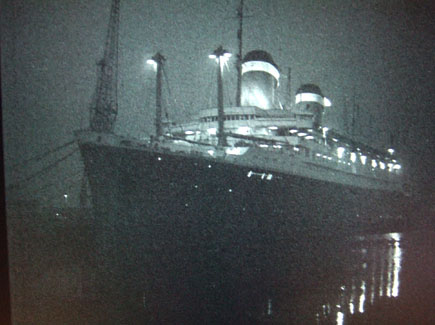
Her captain was a rather irascible man, though this may have been because I burned holes in his deck with a fog canister that decided it was a Roman candle and shot up a shower of sparks instead of smoke. (It spoiled Ritchie’s shot at the same time and he didn’t make half as much fuss). The old man had a liking for gin, which used to render him more disagreeable than ever. The third officer, a young man about my own age, explained that they always knew when to expect the worst because the gin acted as a solvent to whatever fixative the skipper employed to hold his dentures in place. (Perhaps it was he who had suffered the mishap in the Waterloo station toilet).
This was the occasion of my first ever focus-pull, on a 75mm lens bringing the Commodore of the Cunard Line to the front of his bridge to take an 83,000 ton ship out. My concern at the time was not so much getting the shot right as how to ask him to do it again if I didn’t. The next focus job was in the customs shed in the midst of chaos (there’d been none of that in the wheelhouse of the QE). This time I did need a second take, and Gracie Fields was very sweet about it,
“Are y’alright now luv?”
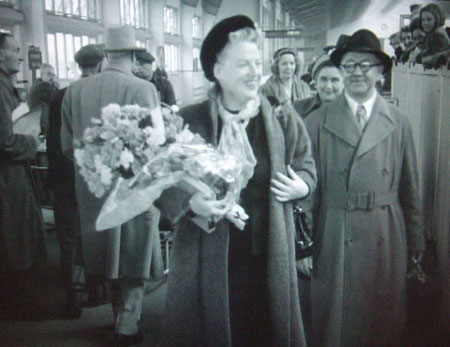
When the Southampton shooting was finished, a meeting took place to decide a title. The one chosen, OCEAN TERMINAL, was the most commonplace. The best to my mind was FOUR TIDES (the Isle of Wight divides the waters of the Solent so that Southampton has four tides in 24 hours instead of everywhere else’s two). Because of the great Cunarders Queen Mary and Queen Elizabeth someone suggested PORT OF QUEENS. There was a flash of the old Bobby …”(Clara)
